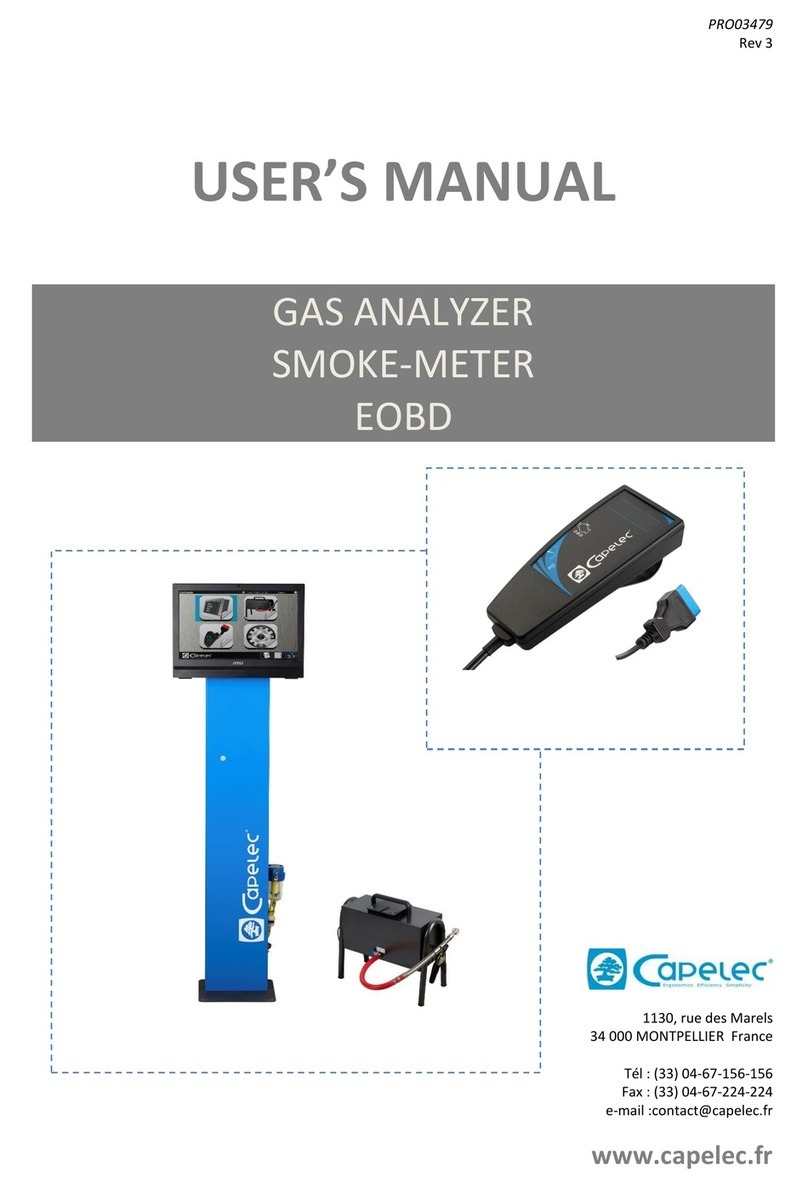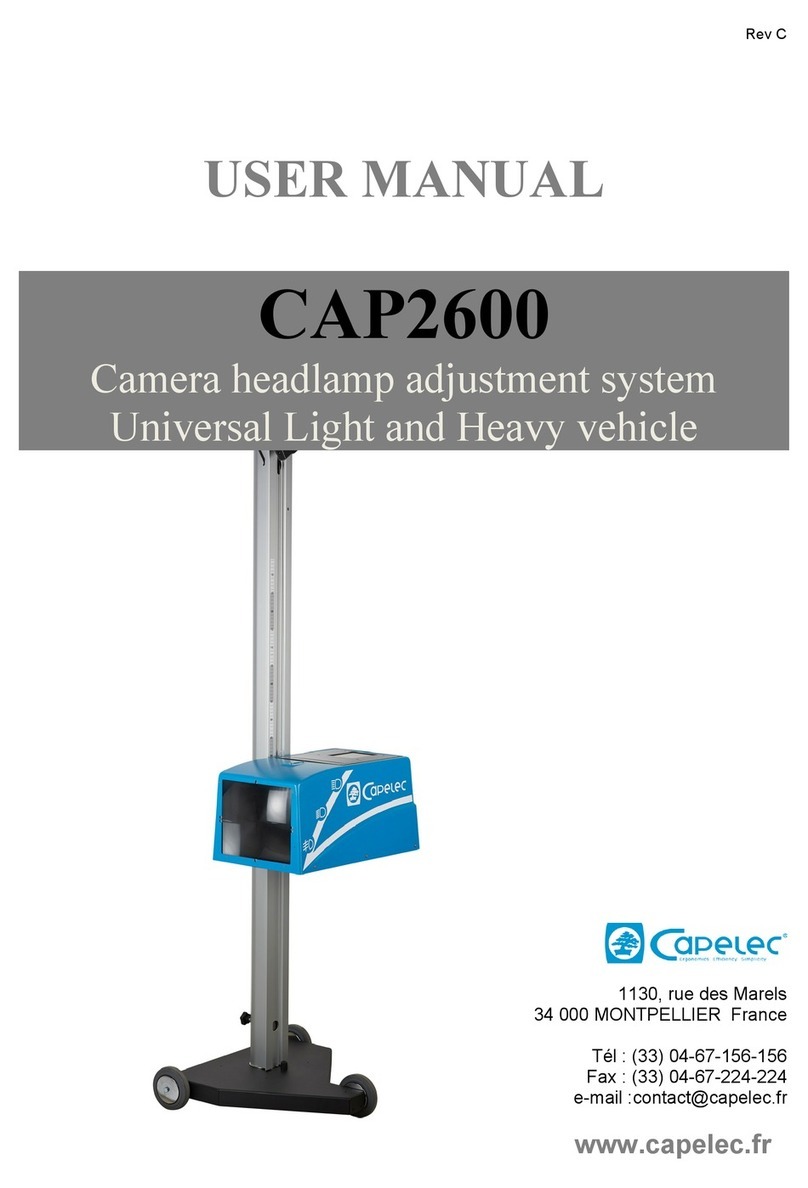
Rev B
I. DESCRIPTION
I.1 Foreword
Thank you for purchasing the CAP8500 tachometer kit for smokemeters and
gas analysers. The ultra-modern design of this product incorporates state of the art
hardware and software technology to address your main concerns: fast installation,
accuracy, reliability and stability.
This tachometer can be used to measure the speed of an engine with no
need to connect an induction clip or piezoelectric sensor, since measurements are
made directly on the basis of the voltage across the vehicle's battery terminals. This
type of measurement is suitable for all types of petrol and diesel engines, and in
most cases, you do not even have to open the bonnet. You can measure the engine
speed simply by plugging the unit into the cigar lighter.
This manual explains how to use the CAP8500 kit, and how to plug it into
your pollution checking equipment. Be sure to read this manual carefully before using
the unit, so as to take full advantage of it. Keep the manual in a safe place for future
reference.
Note:
CAPELEC reserves the right to alter the information published in this
document without notice.
CAPELEC will accept no responsibility for any direct or indirect damage
caused by any means whatsoever, nor for any losses or expense resulting from
misuse of the device.
I.2 Operating principle
The tachometer operates by analysing noise frequencies at the battery
terminals. Certain peripheral devices in the vehicle, such as the alternator, have a
direct effect on the voltage across the battery terminals. When the engine is running,
this voltage does not remain perfectly steady. When studied more closely, one sees
that the battery voltage oscillates slightly in proportion to the engine speed.
By analysing these disturbances, the CAP8500 is able to calculate the
engine speed and transmit it to your pollution checking equipment as an analog or
digital signal.
The CAP8500 can be connected to the CAP3000 smokemeter, to CAP3100
and CAP3110 gas analysers, and to most measuring devices already fitted with a
tachometer function based on an induction clip, piezoelectric sensor or a TTL or
RS232 input.




























